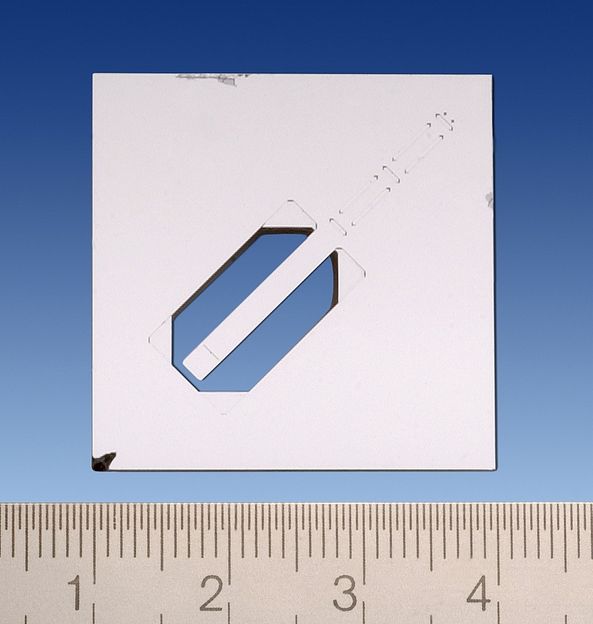Pushing boundaries: Detecting the anomalous Hall effect without magnetization in a new class of materials
The first experimental evidence for the anomalous Hall effect emerging in a collinear antiferromagnet with non-Fermi liquid behavior
An international research team led by Mayukh Kumar Ray, Mingxuan Fu, and Satoru Nakatsuji from the University of Tokyo, along with Collin Broholm from Johns Hopkins University, has discovered the anomalous Hall effect in a collinear antiferromagnet. More strikingly, the anomalous Hall effect emerges from a non-Fermi liquid state, in which electrons do not interact according to conventional models. The discovery not only challenges the textbook framework for interpreting the anomalous Hall effect but also widens the range of antiferromagnets useful for information technologies.

Basic research contributes to technological innovation by deepening our understanding of the interplay between antiferromagnetism, band topology, and strong electron interactions.
Ray et al 2025
Spins are intrinsic properties of electrons, typically described as being either “up” or “down”. In ferromagnets, spins align in the same direction, magnetizing the material. This magnetization can lead to a voltage perpendicular to the electric current even without an external magnetic field; this is the anomalous Hall effect. In contrast, antiferromagnets feature spins that are aligned in opposite directions, effectively canceling out magnetization. Thus, it should follow that the anomalous Hall effect does not emerge in antiferromagnets. Yet it does.
“There have been previous reports on the anomalous Hall effect appearing in a certain class of collinear antiferromagnets,” says Nakatsuji, the principal investigator. “However, the observed signals were extremely weak. Identifying a truly magnetization-free anomalous Hall effect was of broad scientific and technological interest.”
This endeavor required coordination across various groups. Fu and her colleagues were responsible for the experimental setup to measure the effect. They used a family of materials called transition metal dichalcogenide (TMD) as two-dimensional (2D) building blocks. By inserting magnetic ions between the atomic layers, the researchers could control the movements and interactions of electrons. The modified structure, now in 3D, had the potential to exhibit new behaviors that could not have been possible in only 2D. At last, the researchers could make measurements of the anomalous Hall effect across a wide range of temperatures and magnetic fields. In addition, Broholm’s group’s provided microscopic evidence confirming the collinear antiferromagnetic structure of the material. The results were then combined with the theoretical analysis and calculations done by Ryotaro Arita’s group at UTokyo.
“One of the main challenges in our research project has been constructing a coherent scientific narrative from our observations,” says Fu, a co-lead of the paper. “Each step required careful interpretation, especially due to the structural disorder commonly found in transition metal dichalcogenide (TMD) systems.”
The resulting measurement is the first strong experimental evidence for the anomalous Hall effect observed in collinear antiferromagnets. As the anomalous Hall effect is commonly believed to go hand in hand with magnetization, the detection suggests that something far beyond the standard understanding is at play. Researchers suspect the phenomenon is rooted in the unique structure of the material’s electron bands, causing a large “virtual magnetic field” and boosting the anomalous Hall effect in the absence of magnetization. Nakatsuji explains the next steps.
“We are seeking experimental confirmation for this hypothesis and actively pursuing a range of follow-up studies using complementary techniques, including Raman spectroscopy, to uncover the underlying mechanisms.”
Original publication
Mayukh Kumar Ray, Mingxuan Fu, Youzhe Chen, Taishi Chen, Takuya Nomoto, Shiro Sakai, Motoharu Kitatani, Motoaki Hirayama, Shusaku Imajo, Takahiro Tomita, Akito Sakai, Daisuke Nishio-Hamane, Gregory T. McCandless, Michi-To Suzuki, Zhijun Xu, Yang Zhao, Tom Fennell, Yoshimitsu Kohama, Julia Y. Chan, Ryotaro Arita, Collin Broholm, Satoru Nakatsuji; "Zero-field Hall effect emerging from a non-Fermi liquid in a collinear antiferromagnet V1/3NbS2"; Nature Communications, Volume 16, 2025-4-18
Original publication
Mayukh Kumar Ray, Mingxuan Fu, Youzhe Chen, Taishi Chen, Takuya Nomoto, Shiro Sakai, Motoharu Kitatani, Motoaki Hirayama, Shusaku Imajo, Takahiro Tomita, Akito Sakai, Daisuke Nishio-Hamane, Gregory T. McCandless, Michi-To Suzuki, Zhijun Xu, Yang Zhao, Tom Fennell, Yoshimitsu Kohama, Julia Y. Chan, Ryotaro Arita, Collin Broholm, Satoru Nakatsuji; "Zero-field Hall effect emerging from a non-Fermi liquid in a collinear antiferromagnet V1/3NbS2"; Nature Communications, Volume 16, 2025-4-18
Organizations
Other news from the department science

Get the chemical industry in your inbox
By submitting this form you agree that LUMITOS AG will send you the newsletter(s) selected above by email. Your data will not be passed on to third parties. Your data will be stored and processed in accordance with our data protection regulations. LUMITOS may contact you by email for the purpose of advertising or market and opinion surveys. You can revoke your consent at any time without giving reasons to LUMITOS AG, Ernst-Augustin-Str. 2, 12489 Berlin, Germany or by e-mail at revoke@lumitos.com with effect for the future. In addition, each email contains a link to unsubscribe from the corresponding newsletter.
Most read news
More news from our other portals
Last viewed contents
Collision_frequency
Multi-component_reaction

Measurement of the dynamic mechanical properties of viscous materials - DIN standard for the determination of the tip radius and the probing force of stylus instruments developed
Gigantism
Firmament
Watson's



























































